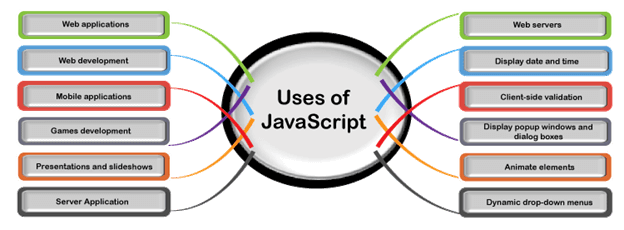
JavaScript is a versatile and powerful programming language that is used for a wide range of purposes in web development and beyond. Some of the key uses of JavaScript include:
Web Development: JavaScript is primarily known for its use in web development. It's used to add interactivity, create dynamic effects, validate forms, manipulate the content of web pages, and develop responsive user interfaces. It can be employed in both front-end (client-side) and back-end (server-side) development.
Front-End Development: JavaScript is extensively used for front-end development, working in conjunction with HTML and CSS. It enables developers to create interactive web pages and web applications. Popular front-end frameworks and libraries like React, Angular, and Vue.js are built on JavaScript.
Back-End Development: With the advent of server-side frameworks like Node.js, JavaScript can now also be used for back-end development. Developers can create server-side applications, APIs, and perform server-side operations using JavaScript.
Web and Mobile App Development: JavaScript is used for creating both web applications and mobile applications. Technologies like React Native and Ionic allow developers to build mobile apps using JavaScript.
Game Development: JavaScript is increasingly used for game development. Libraries and frameworks like Phaser and Three.js enable developers to create games for the web.
Browser Extensions: JavaScript is used to build browser extensions and add-ons that extend the functionality of web browsers, enhancing the user experience.
Data Manipulation and Validation: It allows developers to manipulate and validate data entered by users in forms, perform calculations, and process data within the browser.
Interactive Elements: JavaScript powers interactive elements on web pages, such as sliders, pop-ups, carousels, accordions, and more, enhancing user engagement.
Animation and Effects: It's used to create animations, transitions, and visual effects on websites, making them more engaging and visually appealing.
Control of Multimedia: JavaScript enables the control of multimedia elements on web pages, allowing for features like video players, audio controls, and more.
JavaScript's versatility and wide range of functionalities make it an integral part of web development and an essential tool for creating dynamic and interactive web applications.
Thank you.